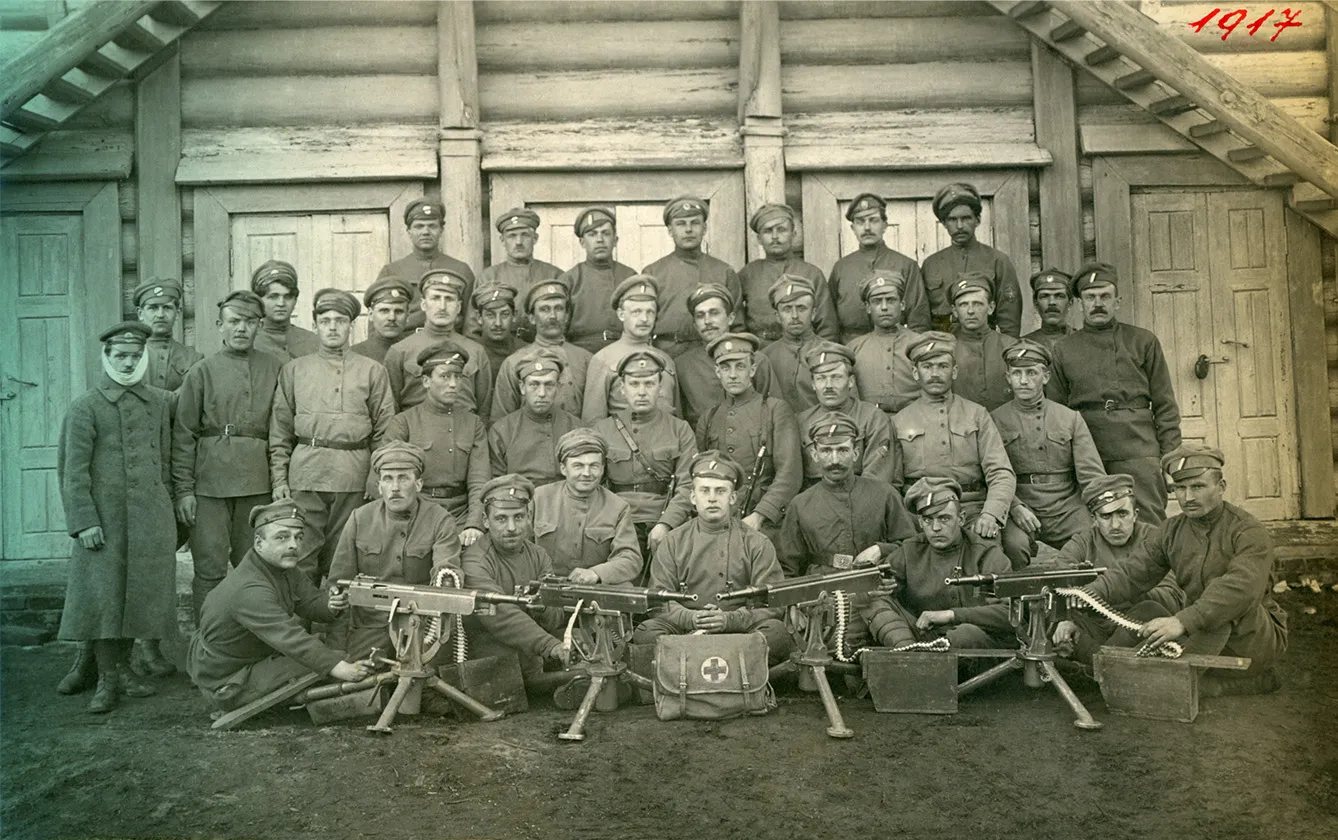It was 1918, and the Czechoslovak Legionnaires were a few months from becoming the rulers of the Trans-Siberian Magistrale, a key railway spanning through all of Russia. And that year, Czechoslovak troops were to fight the first and last naval battle of Czechoslovak and Czech history. And not surprisingly, it was a victorious battle that dealt a severe blow to Bolshevik armies in the region.
Preparations before the fateful battle
After the Communist revolution in then-Tsarist Russia in 1917, the Czechoslovak Legionnaires began a grueling journey across the country to the Pacific port of Vladivostok. In Russia, the Legionnaires fought for the independence of Czechoslovakia against Germany and Austria-Hungary, which Czechoslovakia had been part of before and during the First World War.
After the Bolshevik Revolution in Russia, the political representatives and generals of the Czechoslovak legions agreed with the communist leaders to move peacefully across Siberia to Vladivostok and leave the country by ship. However, the agreement did not work out, and because of communist provocations, open fighting between the Bolsheviks and the legionaries occurred. And just like that, the legionnaires engaged in a bloody civil war.
And this brings us to August 1918. At that time, the Legionnaires, thanks to armored trains, controlled most of the Trans-Siberian Magistrale and thus controlled all transport across Siberia. In early August, the Legionnaires captured the strategic town of Irkutsk, the regional headquarters of the Soviet resistance.
Strategic Baykal
The Bolsheviks withdrew from Irkutsk to the mountain passes surrounding Lake Baikal, the oldest and deepest lake in the world. Locals call it the Baikal Sea and treat it as such, including shipping lines and beach resorts. This was also when Czechoslovak Legionnaires were bathing on its beaches in 1918.
In addition to swimming, they had more strategic goals on the shores of the lake. The first was to capture the Nikolayevsky munitions factory at the mouth of the Angara River. It was here that the legionnaires requisitioned three ships, and it was then that the master plan was born.
The legionnaires decided to arm the steamers Sibirjak, Buryat, and Feodosia with several howitzers and machine guns and turn them into floating gunnery stations. The plan was to cross the lake and land in the Bolshevik-fortified town of Babushkin. Simultaneously, an armored legionary train would launch an attack on the city, moving towards it along the Trans-Siberian Magistrale. All the while, the ships were to shell the town.
Seawolves from Czechoslovakia
As it was planned, so it happened. The ships made a surprise landing on August 16, 1918, that brought utter chaos to the Bolshevik defenses of the city. The enemy’s heavily armed Baikal icebreaker was anchored in the harbor then. It immediately opened fire on the Legionnaires’ ships. To this day, it is unknown whether by luck or by the precision of one Legionary gunner, one shot was enough to sink the feared Baikal.

After about half an hour of shelling, the positions of the Communist forces were in flames, and the city’s defenses were in ruins. By the time the armored Legion train rolled into town, the battle was more or less over.
But the Legionnaires had one more big challenge ahead of them. As the ships were leaving the waters of Babushkin harbor, the Bolshevik heavily armed icebreaker Angara appeared on the horizon. But when its crew saw that the battle was over in Babushkin, they avoided an open confrontation with the Legionnaires.
But Angara did not escape the fate that befell him a few days later. The legionaries’ ships caught up with Angara and began shelling it. The Bolsheviks immediately returned fire. After a while and a few hits, they surrendered and handed the Angara icebreaker over to Czechoslovak hands.
A net score of Czechoslovakian navy
And so, within a few days and one battle, Czechoslovakia won its first and, for now, last naval battle. It was not a battle of epic proportions like the Battle of Trafalgar, but it was of equal strategic importance to the legionaries’ efforts in the desolate Siberian wilderness.
Many legionnaires who took part in the Battle of Lake Baikal and were crew members of Czechoslovak “warships” later joined the merchant fleet. This merchant fleet was not an official institution of the Czechoslovak Republic but a loose association of merchant ships belonging to several large companies, such as the shoemaking empire Baťa or the Bank of Czechoslovak Legions.
This very bank was established in legionary-occupied Irkutsk to manage the legionaries’ finances. Therefore, it was logical that many of the men who fought in and around Irkutsk went into the service of this banking house.







